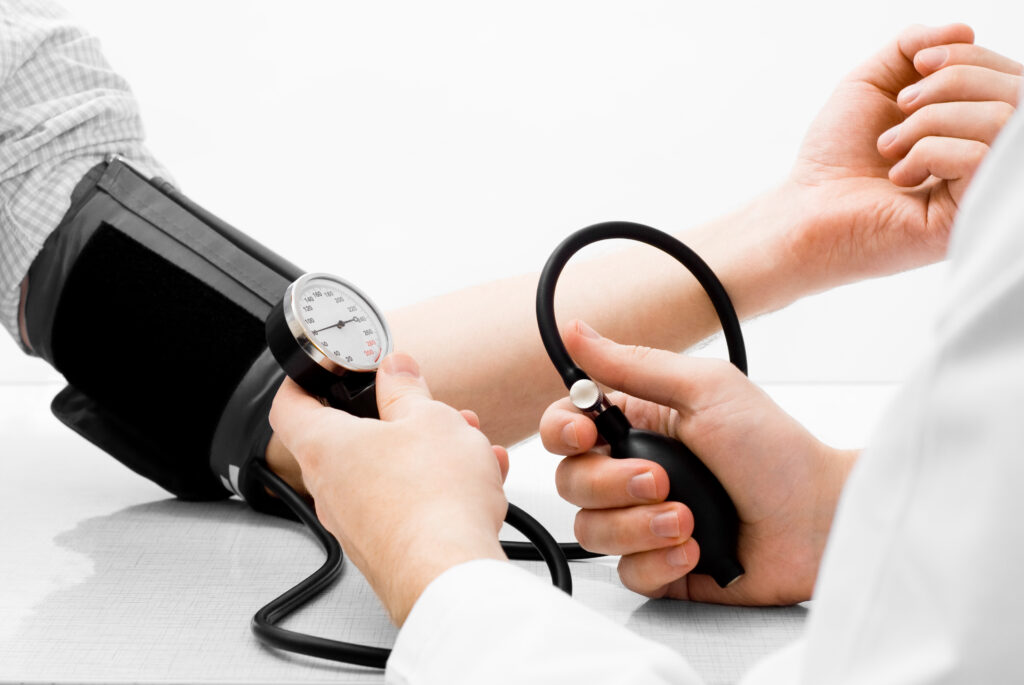This week from Dr. Cerami and Utah Sports and Wellness
From: Journal of Family Medicine and Primary Care, 2018
Quick Summary:
This is a case report of a woman who experienced long-term relief from tension-type headaches and major depression following chiropractic treatment. Pain was disabling, going across the forehead to her nuchal area and right shoulder. She could not maintain daily activities without acetaminophen and aspirin. Blood tests, brain MRI, and cervical x-rays were all unremarkable.

Physiotherapy, acupuncture, traditional Chinese therapy, and other drugs all failed to help or to change her headache pattern. She began experiencing episodes of extreme low moods, characterized by feelings of overwhelming sadness, she was referred to the psychiatry services and was diagnosed with a major depressive disorder. 6 months of various drug treatments for depression fail to help her. Chiropractic Treatment: strategy was to stretch and relax the spastic muscles, restore motion in the respective segments, and to rehabilitate sensorimotor integration with diversified spinal manipulation after 3 months (41 chiropractic visits), the patient regained confidence in her health and started reducing the dose of medications. She rated her headache as 3–5/10 on the pain scale 3.
After 6 months (65 chiropractic visits) “all of her symptoms disappeared, and she was able to discontinue all medications.” “Having enjoyed headache free and mood stability over the past 6 years, the patient continued maintenance care on a monthly basis.” This study implies that chiropractic may help depression through two mechanisms: Spinal adjustments inhibit sympathetic tone, reducing dopamine and upper cervical adjustments excite parasympathetic tone, increasing serotonin.
Abstract:
We report the case of a 44-year-old school teacher who experienced long-term relief from tension-type headache (TTH) and major depression following chiropractic treatment. It is well recognized that psychiatric comorbidity and suicide risk are commonly found in patients with painful physical symptoms such as chronic headache, backache, or joint pain. Recent studies indicated that autonomic dysfunction plays a role in the pathogenesis of TTHs and depressive disorders. The autonomic nervous system is mainly controlled by reflex centers located in the spinal cord, brain stem, and hypothalamus. This report highlights the rewarding outcomes from spinal adjustment in certain neuropsychiatric disorders. Long-term results of chiropractic adjustment in this particular case were very favorable. Further studies with larger groups are warranted to better clarify the role of chiropractic.
These authors also note:
- “Psychiatric comorbidity and suicide risk are commonly found in patients with painful physical symptoms such as chronic headache, backache, or joint pain.”
- “Autonomic dysfunction plays a role in the pathogenesis of tension-type headache and depressive disorders.”
- “The core cause of tension-type headache resides in the autonomic nervous system.”
- “Autonomic dysregulation has also been considered to play a role in the pathogenesis of depressive disorders.”
- Chiropractic cervical adjustments result primarily in parasympathetic responses.
- Chiropractic thoracic adjustments result primarily in sympathetic responses.
- Chiropractic adjustments “may lead to some therapeutic outcomes in certain neuropsychiatric disorders.”
- “Chronic pain and depression can influence one another through complex webs of connections.”
- “The autonomic nervous system is one of the major neural pathways activated by chronic stress.”
- “Under the influence of chronic stress, such as backache or headache, the sympathetic nervous system is continuously provoked without parasympathetic counteraction appropriately.”
- “Increased epinephrine and norepinephrine levels can incite an increase of proinflammatory cytokines” and neuroinflammation, which “can exert neurotoxic changes in the brain with the pathophysiology of depression.”
- Depression may be caused by an imbalance or a functional deficiency of key neurotransmitters (serotonin, norepinephrine, and dopamine).
- “Dysregulation of these transmitters is linked to both depression and pain.”
- “Elevated levels of serotonin often result in the relief of depression and anxiety, as well as substantial reduction in pain sensitivity.”
- Several antipsychotic drugs work by blocking postsynaptic dopamine receptors in the central nervous system (reducing the influence of dopamine).
- “Chiropractic care is a way to reduce the frequency of pain, and the duration and intensity of headaches.”
- Since autonomic dysfunction correlates with tension-type headache and depression, the biological mechanism of spinal adjustment benefit is probably “related to parasympathetic response.”



